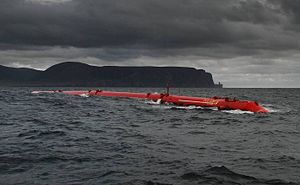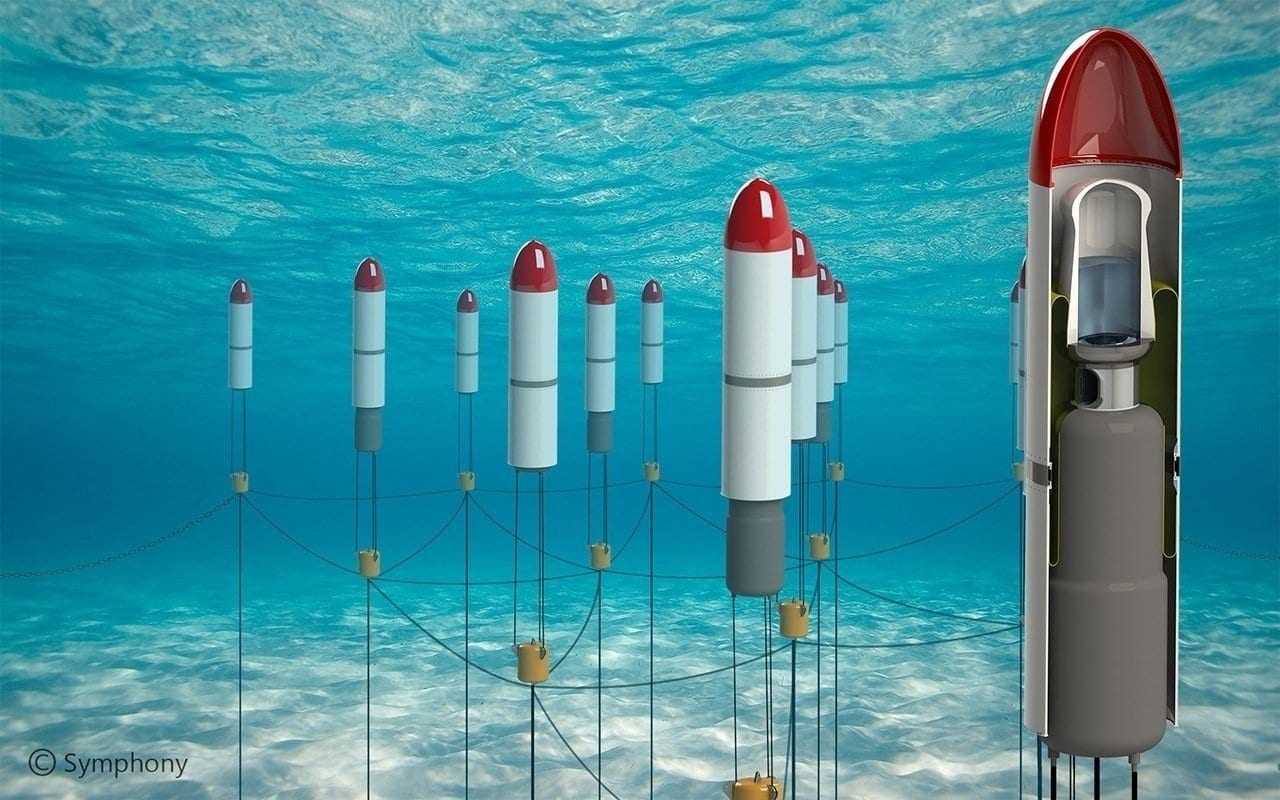
The project may even spawn global standards for underwater noise
One device resembles a big fishing float with a piston that goes up and down as it bobs on the waves. Another uses the up-and-down motion to compress air as a way of turning a turbine. Such machines could tap the relentless power of ocean waves to harvest clean, renewable energy — so long as their underwater noise does not run afoul of environmental regulations by disrupting the lives of whales and dolphins.
Now Ireland has teamed up with IBM to hang strings of hydrophones around experimental wave-energy machines — some the size of a trailer — located off the Emerald Isle’s wave-battered coast. Along with a noise-monitoring buoy, such electronic ears aim to record both natural and man-made underwater noises. The collected data could then help policymakers figure out appropriate noise levels that could allow wave- energy machines and harbor porpoises to coexist.
“What will eventually happen is that there will be farms of such machines off the coast in many areas,” said Harry Kolar, IBM chief architect for sensor-based solutions. “It’s a big undertaking with huge investments; the faster we get to that stage of deployment, the sooner we get a steady, cleaner source of renewable energy from the ocean.”
Such a project makes business sense in a world where the European Union and other organizations have rules about permissible underwater noise levels. If successful, the project may even spawn global standards for underwater noise, and perhaps allow for continuous monitoring to ensure compliance with environmental regulations.
IBM’s powerful analytics software has already helped clean-energy startups monitor the energy efficiency of their wave-energy machines under different circumstances. It can also provide the latest updates and instant analysis of the many different noises near wave-energy machines.
“The things we have to filter out in terms of underwater noise include natural noises, wave noises, chains rattling, and ship noises coming in,” Kolar told InnovationNewsDaily. “A lot of that is dynamic based on the weather and wind, so there is a lot of dynamic filtering; it’s really to get to the essence of what is the impact on the environment.”
The project also it promises to create one of the largest continuous collections of underwater sounds ever recorded — a huge opportunity for marine scientists to discover the baseline level for natural noises. Its first test site is located near Galway Bay as part of the SmartBay collaboration between IBM and the Marine Institute Ireland.
The Latest on: Wave energy
[google_news title=”” keyword=”Wave energy” num_posts=”10″ blurb_length=”0″ show_thumb=”left”]- India fires up coal use and emissions during election, heat wave: Maguireon May 8, 2024 at 10:01 pm
India's coal-fired electricity generation and power sector emissions hit record highs during the first quarter as above-average temperatures spurred higher air conditioner use and economic expansion ...
- Toluna’s Barometer Wave 24: Significant disparities in consumer sentiment and spending habits between KSA and global marketson May 8, 2024 at 5:00 pm
However, the looming specter of the energy crisis casts a shadow over spending plans for ... the insights gleaned from our Global Barometer Wave 24 report underscore a significant paradigm shift in ...
- Mexico heat wave triggers 'exceptional' power outages, president sayson May 8, 2024 at 1:13 pm
Widespread recent power outages in Mexico were caused by unseasonably hot weather, the country's president said on Wednesday, assuring consumers that the national grid has sufficient generating ...
- A Deep Dive into Big Waveson May 8, 2024 at 12:05 pm
Mathematics Professor John Carter leads immersive class where students spent spring break studying tsunamis—and culture—in Chile.
- Russia Launches New Wave of Attacks on Ukrainian Energyon May 8, 2024 at 9:30 am
Russia advanced into eastern Ukraine, taking two villages in two regions, Moscow said on Wednesday, in the aftermath of over 70 drone and missile attacks that targeted Ukrainian energy infrastructure ...
- New Wave of LNG Terminals to Boost Europe’s Lagging Hydrogen Useon May 8, 2024 at 7:00 am
Floating terminals to import natural gas allowed Europe to overcome the worst of the energy crisis. Their next task could be to help the continent’s sluggish hydrogen markets take off.
- Rolling Blackouts Hit Several Cities as Heat Wave Scorches Mexicoon May 8, 2024 at 12:02 am
Local officials confirmed several blackouts in the state of Mexico, including in San Mateo Atenco and Metepec, near Mexico City. And during a blackout in the city of Nuevo Laredo, near the Texas ...
- Company receives approval to install fully submerged wave energy converter to generate clean power: 'This is an exciting green light'on May 7, 2024 at 9:00 pm
"We keep taking important steps towards being grid-connected and generating renewable electricity from waves." Company receives approval to install fully submerged wave energy converter to generate ...
- Ukraine limits energy supplies after 'massive' Russian strikeon May 7, 2024 at 5:00 pm
Ukraine on Wednesday said it was limiting power supplies across the country and warned of possible blackouts after a "massive" wave of Russian missiles and drones targeted the country's battered ...
- Researchers make promising breakthrough in wave energy technology: 'New insight for the design and large-scale application'on May 7, 2024 at 3:15 am
This is an attractive idea for clean energy companies, as it does not face the same intermittency issues as wind and solar. Researchers make promising breakthrough in wave energy technology: 'New ...
via Google News and Bing News








